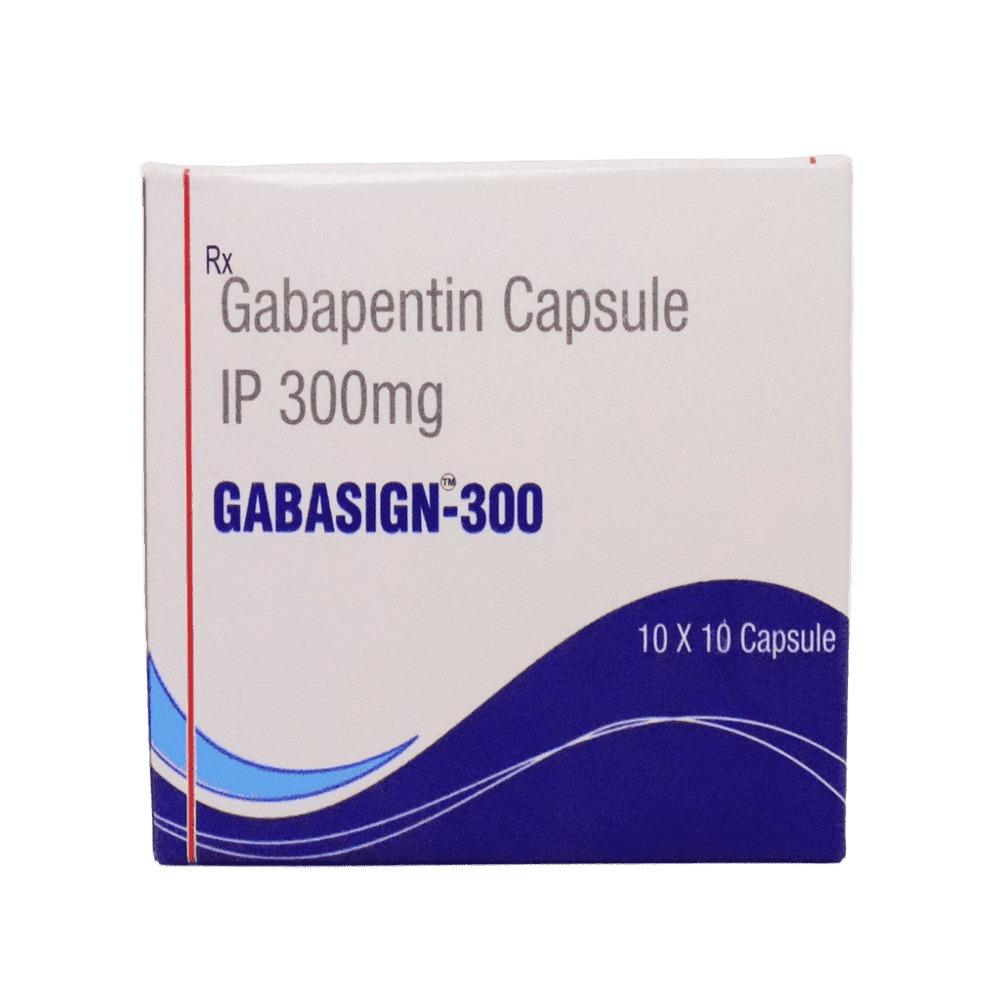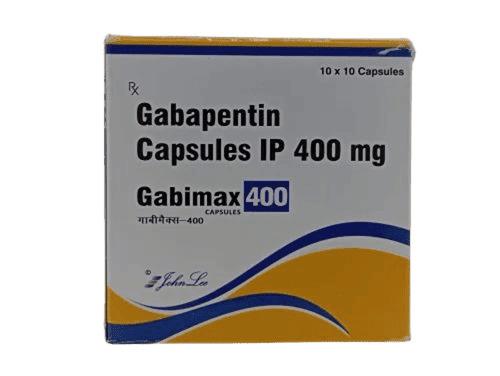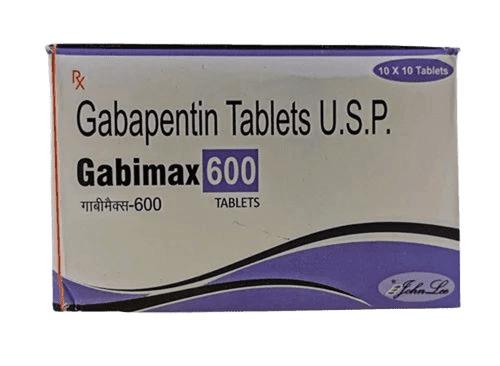Gabapentin is a synthetic analog of gamma-aminobutyric acid (GABA), originally developed as an antiepileptic drug (AED). Though structurally related to GABA, gabapentin does not bind to GABA receptors; instead, it modulates voltage-gated calcium channels by binding to the α2δ subunit. This results in decreased excitatory neurotransmitter release, making it effective in a range of neurological and psychiatric disorders.
Chemical Information
- IUPAC Name: 1-(aminomethyl)cyclohexaneacetic acid
- Molecular Formula: C9H17NO2
- Molekyylipaino: 171.24 g/mol
- CAS Number: 60142-96-3
- Drug Class: Anticonvulsant, Neuromodulator
Farmakodynamiikka
Gabapentin does not directly modulate GABA receptors but exerts its effects by binding with high affinity to the α2δ-1 and α2δ-2 subunits of voltage-gated calcium channels (VGCCs). This leads to:
- Reduced calcium influx in neurons
- Inhibition of excitatory neurotransmitters like glutamate and substance P
- Modulation of pain signaling in the spinal cord
Käyttöaiheet
Gabapentin is approved or widely used off-label for:
- Epilepsy (partial seizures, adjunct therapy)
- Neuropathic pain (postherpetic neuralgia, diabetic neuropathy)
- Generalized anxiety disorder (off-label)
- Fibromyalgia
- Alcohol withdrawal syndrome
- Restless Legs Syndrome (off-label)
Annostus ja antaminen
Typical adult dosages vary by condition:
- Epilepsia: 900–1800 mg/day, in 3 divided doses
- Neuropaattinen kipu: Start at 300 mg once daily, titrate to 1800–3600 mg/day
- Anxiety (off-label): 300–1200 mg/day
Titration is critical to minimize side effects, and abrupt discontinuation should be avoided to prevent withdrawal symptoms or seizure rebound.
Farmakokinetiikka
- Absorptio: Bioavailability is dose-dependent (60% at 300 mg, drops with higher doses)
- Jakelu: Not significantly protein-bound; crosses the blood-brain barrier
- Aineenvaihdunta: Not metabolized by the liver
- Erittyminen: Renal elimination; unchanged
- Half-life: ~5–7 hours
Sivuvaikutukset
Yleinen:
- Uneliaisuus
- Huimaus
- Ataxia
- Väsymys
- Peripheral edema
Rare:
- Mood changes
- Suicidal ideation
- Severe allergic reactions (DRESS syndrome)
Gabapentin may cause dependence in some individuals, especially at high doses or with long-term use. Caution is advised in individuals with a history of substance misuse.
Harm Reduction & Safety
- Avoid combining with other CNS depressants (e.g., alcohol, benzodiazepines)
- Renal function should be assessed regularly in chronic users
- Tapering is necessary to avoid withdrawal symptoms
- May impair cognitive and motor skills—caution with driving or machinery
Legal Status
- YHDYSVALLAT: Prescription-only, Schedule V in some states due to abuse potential
- EU: Prescription-only, not scheduled
- UK: Controlled (Class C, Schedule 3) due to rising misuse
Research and Emerging Uses
Gabapentin continues to be studied in:
- Chronic cough
- Migraine prophylaxis
- Social anxiety disorder
- PTSD-related sleep disturbances
Its role in modulating central sensitization makes it a candidate in multiple pain-related and psychiatric conditions.
Päätelmä
Gabapentin is a well-established neuromodulatory agent with a broad therapeutic range. Despite its relatively benign profile, responsible use and harm reduction are essential due to potential misuse and withdrawal risks. For researchers, it offers a powerful tool for studying calcium channel modulation and neuropathic pathways.
🇪🇺 Gabapentin Legal Status in Europe (2025 Overview)
Gabapentin on GABA analog anticonvulsant, primarily prescribed for epilepsy, neuropathic pain, and anxiety. It is not a benzodiazepine or opioid, but it acts on calcium channels, and its off-label use has raised concerns over abuse and dependency.
As a result, its legal status varies significantly across Europe — in some countries it’s prescription-only, while in others it’s been recently reclassified as a controlled substance due to rising misuse.
✅ Prescription-Only (Not Controlled)
In these countries, Gabapentin is a prescription drug, but not classified as a narcotic or psychotropic substance. It’s regulated under standard medical laws:
- 🇫🇷 France
- 🇩🇪 Germany
- 🇪🇸 Spain
- 🇵🇹 Portugal
- 🇧🇪 Belgium
- 🇮🇹 Italy
- 🇨🇿 Czech Republic
- 🇸🇪 Sweden
- 🇫🇮 Finland
- 🇭🇷 Croatia
- 🇱🇹 Lithuania
- 🇪🇪 Estonia
- 🇦🇹 Austria
- 🇩🇰 Denmark
- 🇳🇱 Netherlands
In these cases:
- Gabapentin is prescribed and dispensed like a typical anticonvulsant.
- There is no need for special narcotic prescription forms.
- Monitoring may still exist for suspected abuse cases (e.g. France’s secure prescription tracking system).
🔒 Controlled Substance / Misuse Risk Classification
Some countries have reclassified Gabapentin as a controlled substance, citing growing recreational misuse, especially in combination with opioids or benzodiazepines.
Countries with tightened control:
| Country | Status |
|---|---|
| 🇬🇧 United Kingdom | Since 2019, Gabapentin is a Class C / Schedule 3 controlled substance under the Misuse of Drugs Act. Requires secure prescription and is subject to dispensing restrictions. |
| 🇮🇪 Ireland | Classified under the Misuse of Drugs (Amendment) Regulations 2020. Requires secure prescription and careful monitoring. |
| 🇳🇴 Norway | Classified as a controlled drug under national narcotics legislation. Prescription-only with strict dispensing controls. |
| 🇨🇭 Switzerland | Under surveillance but not yet scheduled; some cantons restrict use regionally. |
| 🇸🇰 Slovakia | Moved to controlled substances list due to high misuse rates. |
| 🇭🇺 Hungary | Controlled; prescription required and monitored. |
⚠️ Import, Possession, and Travel
- Illegal to import or possess Gabapentin without a prescription in any EU country.
- In countries where it is controlled, you must carry a Schengen narcotic certificate or doctor’s letter when traveling with it.
- Customs seizures have increased in countries with tightened regulations (e.g., UK, Ireland, Norway).
📝 Schengen narcotic travel certificate info:
https://www.schengenvisainfo.com/schengen-certificate/
💊 Key Risks
- Gabapentin is often misused recreationally for sedative or euphoric effects.
- Can potentiate opioids and benzodiazepines — leading to increased overdose risk.
- Despite being unscheduled in some countries, doctors may still restrict or monitor its use, especially for non-neurological indications.
🧠 Summary Table
| Legal Status | Countries |
|---|---|
| ✅ Prescription-only (not scheduled) | 🇫🇷 🇩🇪 🇪🇸 🇵🇹 🇧🇪 🇮🇹 🇳🇱 🇨🇿 🇸🇪 🇫🇮 🇩🇰 🇦🇹 🇱🇹 🇪🇪 etc. |
| 🔒 Controlled substance | 🇬🇧 🇮🇪 🇳🇴 🇭🇺 🇸🇰 🇨🇭 (regional) |








Arvostelut
Arvosteluja ei vielä ole.